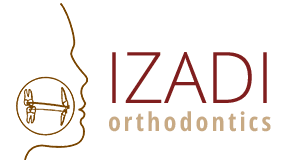Board-certified orthodontist Dr. Mohammad Izadi offers an innovative approach to treating myofunctional habits and jaw developmental issues in growing children. Dr. Izadi can correct orthodontic issues with a one-phase treatment. However, this is not the case for some children. Two-phase orthodontic treatments address the early signs of developing orthodontic concerns. Phased treatment supports healthy speech and jaw development and often prevents the need for more complex treatment later in life.
By utilizing the first phase, during the second phase, your child will mostly have a better experience. The length of time in braces will be shorter, and you avoid the need for extractions and surgery. Our two-phase treatment is one of the orthodontic services we provide to new and existing patients in Baltimore County, Maryland.

Actual patients of Dr. Izadi! All rights are reserved
Early Intervention for Lifelong Prevention
We encourage parents to bring their child in for an orthodontic evaluation by the age of 7 to determine if phase one orthodontics is necessary. By this time, their six-year molars and permanent anterior teeth have emerged. Early orthodontic exams are especially important for children who practice myofunctional habits such as tongue-thrusting or thumb-sucking.
Signs of oral developmental problems include:
- Finger or thumb sucking
- Tongue thrusting
- Crowded teeth
- Early loss of baby teeth
- Difficulty chewing or speaking
- Teeth that do not make contact
Phased-orthodontic treatment can help children address developmental concerns early on in life. Early treatment helps to promote lifelong oral health and prevents speech delays and potential social stigmatization later in life. Children with musculoskeletal imbalance or malocclusion issues benefit from early intervention and phase one treatment.
Why Some Kids Need Two Phases of Orthodontic Treatment
Not every child requires two phased orthodontic treatment. However, certain conditions make this approach necessary. Here are some reasons why Dr. Izadi may suggest two phases:
Severe Bite Issues
Children with severe bite problems, like crossbites, underbites, or overbites,will benefit from early intervention. If we address these issues early, it will prevent problems and make Phase Two more effective.
Crowding and Spacing Problems
When a child’s mouth lacks space for permanent teeth, early treatment can help. We offer palatal expanders and space maintainers that will create room for your child’s teeth to grow in correctly.
Jaw Growth and Development
If Dr. Izadi is able to guide jaw growth during Phase One, your child will have better alignment. Helping a child’s jaw grow properly can help them avoid more treatments in the future, such as jaw surgery.
Improved Self-Esteem
We often see that early treatment can boost a child’s confidence. Correcting visible dental issues helps kids feel more comfortable with their smiles, positively impacting their social interactions.
Phased Orthodontic Treatment Timonium, MD
Dr. Izadi takes a comprehensive and personalized approach to phased treatment. We get to know your child so that they feel comfortable and look forward to their orthodontic visits. We track your child’s oral development and progression and provide post-treatment support for a full year after treatment to ensure lasting results.
Each child receives a thorough functional analysis of their entire oral cavity and jaw. In Phase I of treatment, Dr. Izadi addresses the functional aspects of the teeth and jaw to provide orthodontic care that will support a healthy, stable smile. Our orthodontic care team’s goal is to minimize the risk of orthodontic relapse or the need for braces by treating the underlying cause of the child’s malocclusion or musculoskeletal concerns.
Phase One: Early Intervention
Orthodontists typically start Phase One when the child still has baby teeth. This phase usually occurs between ages 6 and 10. Early intervention focuses on guiding jaw growth and creating space for permanent teeth.
Phase one treatment typically includes some style of orthodontic appliance. The style of appliance we recommend depends on your child’s personal oral health and orthodontic concerns.
Dr. Izadi works with patients to build personalized recommendations on breaking myofunctional habits and how to best care for their oral appliance and their beautiful smile. Some of the common treatments we use during this phase include:
- Palatal expanders
- Partial braces
- Retainers
- Sagittal appliances
- Herbst appliances
These treatments help correct bite issues, such as crossbites and underbites. They also prevent more severe problems from developing later.
Phase Two: Comprehensive Treatment
After phase one treatment, your child will go through a resting period where normal mouth and teeth development will take place. Dr. Izadi will still continue to monitor your child’s development during this time.
Phase two orthodontic treatment will begin once most or all of the permanent teeth have come in. This is usually when a child is between the ages of 11 and 14.
This will most likely entail upper and lower braces and a much shorter treatment time since phase one was utilized. The goal is to achieve a healthy, functional, and aesthetically pleasing smile.
Benefits of Two Phased Orthodontic Treatment
Two-phased orthodontic treatment offers many benefits over traditional single-phase treatment. Here are some key benefits:
- Better Results: If Dr. Izadi can address issues early and fine-tune them later, this will lead to better results that last longer.
- Reduced Risk of Relapse: It has been proven that early treatment stabilizes the teeth and jaw. Early treatment, therefore, reduces the chances of problems returning.
- Less Invasive: If Dr. Izadi can guide your child’s jaw growth early, this will eliminate the need for more invasive treatments, like extractions or surgery.
- Shorter Treatment Time: By addressing issues in two phases, the overall treatment time can be shorter compared to waiting until all permanent teeth have erupted.
Is Two Phased Treatment Right for Your Child?
Your child may not need two-phased orthodontic treatment. If you think you child is having issues, schedule a consultation with Dr. Izadi. All children should have an orthodontic consultation around the age of 7-9. Dr. Izadi will suggest this type of orthodontic treatment if it is the best approach for your child’s needs. Dr. Izadi will evaluate factors like:
- Age and growth stage
- Severity of dental issues
- Jaw development
- Overall oral health
Two-Phase Orthodontic Treatment FAQs
Learn more about our two-phased orthodontic treatment plan by reading through these frequently asked questions.
Can any child get two-phase orthodontic treatment?
No. You can treat most orthodontic problems in children in one phase of comprehensive orthodontic treatment. Children that show more severe symptoms early on do benefit from two-phase treatment.
Is early orthodontic treatment necessary?
The answer depends on how severe your child’s orthodontics issues are. If your child is showing signs of misalignment or overcrowding of teeth at an early age, then we highly recommend two-phase treatment. Not every child needs early orthodontics treatment.
Can you get braces twice or more?
Yes. If your first treatment fails for any reason, it is possible to get braces again. Patients that neglect to wear their retainers or wait too long to get braces are more susceptible. Orthodontic relapse is avoidable with two-phase treatment.
How long is Phase II orthodontic treatment?
Phase II usually begins when a child is 11 or 12 years of age. Typically, this phase of orthodontic treatment lasts between 12 and 20 months. But each case is unique, and our orthodontist will evaluate you on an individual basis.
What are the phases of orthodontic treatment?
The first phase of orthodontic treatment is the planning stage. In this stage, the orthodontist will diagnose your mouth and come up with a plan to align your teeth. In the second phase, the “active phase,” you will undergo orthodontic treatment to realign your smile. In the last phase, the “retention phase,” we will attempt to prevent your teeth from shifting out of alignment.
How many times does an orthodontist tighten braces?
Each patient is unique, but on average, you should have your braces tightened or adjusted every four to ten weeks. Your orthodontist will personalize your braces treatment to your individual needs, so the amount of tightening appointments varies.
Discuss your orthodontics options with Dr. Izadi by scheduling a consultation online, or give us a call at (410) 919-9806 today.
